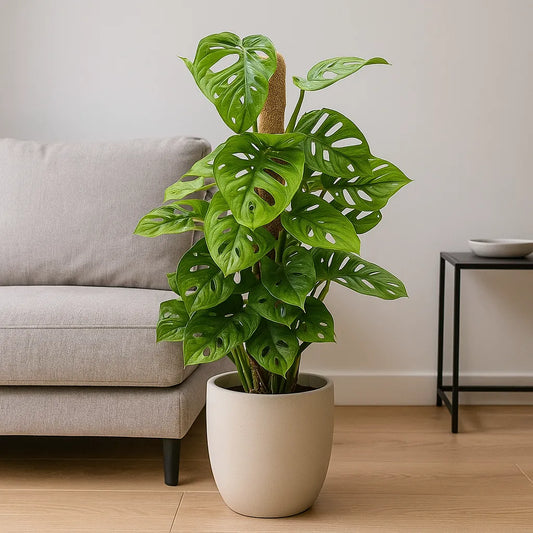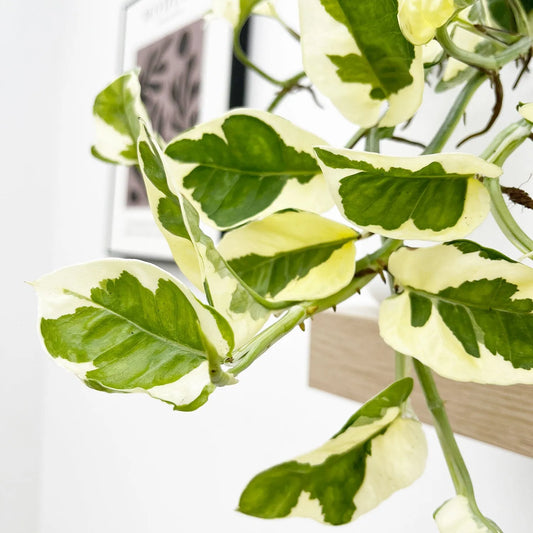Philodendron Vs Alocasia
Of all the houseplant varieties available in the UK, there are two that are loved by experts and novices alike: the Philodendron and the Alocasia.
Both plants are prized for their gorgeous displays that can be maintained with little care and maintenance. Like nearly all of the most popular houseplants in the UK both of these species are members of the Araceae family of tropical plants.
Due to this familial connection, they share many common features but they are different plants. This guide will help you to choose which of these plants is best for you and provide you with some care tips and tricks for each.
What is a Philodendron?
The Philodendron is a tropical plant native to the Caribbean, Columbia and Venezuela. Its name loosely translates to ‘tree hugger’ because this plant loves to climb and, in its natural habitat, will climb up trees to reach above the canopy. Philodendron houseplants have been a mainstay of indoor gardens for over a hundred years and are prized for their low maintenance nature.
There are two types of Philodendrons: vining philodendrons such as the heartleaf Philodendron which will climb up a supporting structure; and non-climbing philodendrons such as the lacy tree Philodendron or birds’ nest Philodendron which form huge displays of upright plants that grow wider than they are tall.
Philodendron species are notable for their large, leathery leaves, which can be oval, pointed or heart-shaped. They are usually lush green and can have cream or cerise variegation.
Philodendron Care
This easy to look after houseplant is loved so much because it will tell you exactly when something is wrong. Watch the leaves of your Philodendron carefully as they will let you know when they need more or less light, water or moisture.
Light
This plant loves sunlight so put your Philodendron in a sunny location with bright, indirect light. Ideally a position near a sunny window, but out of direct contact with the sun’s rays is ideal. If there is too much sun the leaves will begin to burn and blister or become yellow; if the light is too dim the colour may begin to fade and the leaf will become brown.
Humidity
As it’s a tropical plant, the Philodendron loves humid environments and will thrive in a bathroom or kitchen. But, you can put your plant anywhere you want. If you do choose a less-humid space, make sure to mist the leaves around twice a week or put the plant on a pebble tray.
Water
You should allow the top inch of soil to dry out before watering your Philodendron. The easiest way to test this is to insert your finger into the soil up the first knuckle. Water the plant well until the soil is moist, but not soggy and make sure that you have a well-draining pot. If the plant is over or under watered, the leaves will begin to droop so you should adjust your watering schedule accordingly and the leaves will quickly bounce back.
Fertiliser
Feed your plant with a well-balanced liquid houseplant fertiliser. Water monthly in spring and summer and every six to eight weeks in winter and autumn. If your plant has small leaves or slow growth then it needs more fertiliser. If new leaves emerge pale, that is an indication that your plant needs more calcium and magnesium, so try to find a fertiliser that includes these.
Climbing Support
For climbing Philodendron species you will need to give your plant something to climb up. A moss pole or plant support are the best things for this. Your Philodendron will clasp onto anything it can to climb, so it is best to get to climb where you want it to.
For more information on how to care for your Philodendron plants, please read our full guide.
What is an Alocasia?
The Alocasia is a plant species native to the subtropics of Asia and eastern Australia. These plants grow from tubers instead of seeds and are best known for their large heart, arrow or ear-shaped leaves that have been known to grow up to three feet long.
Whilst the leaves are most commonly green they can come in red, pink or variegated colours, and have a bumpy or coarse texture.
Alocasia care
Light
Unlike the Philodendron, the Alocasia prefers filtered light or partial shade. Ideally, a bright room with a window covered by shutters or thin curtains would be best, but your plant should be fine if kept out of direct light. In lower light conditions the leaves will be more vibrant.
Humidity
The Alocasia thrives in very humid environments and does not tolerate the cold well. Make sure to keep away from cold draughts. This is a plant that will love a bathroom or kitchen. If not put in a humid room, place on a pebble tray or mist regularly to increase humidity.
Water
This is a water water-loving plant species and should be watered regularly to keep the soil moist, but not soggy. They are, however, a lot less forgiving of overwatering which makes them susceptible to fungal infections and common pests. As a guide, only water when the top few inches of soil have become dry, and remember that the plant goes dormant in the winter so needs a lot less watering.
Fertiliser
Alocasias like a lot of feeding, and larger plants will require more feed. Apply a well-balanced liquid feed through the spring and summer frequently or small amounts of granular feed.
For more information on how to care for your Alocasia plants, please read our full guide.
Alocasia vs Philodendron: which one is best for me?
Both of these plants would make fantastic additions to any houseplant collection, and all indoor gardeners should consider both, but which one you choose will ultimately depend on if you can support the plant’s needs.
Whilst both have similar requirements, an Alocasia will struggle in a draughty or cold house, and many Philodendron varieties will suffer if not able to climb. Adapting your environment to these conditions can always be done, and ultimately shouldn’t deter you from trying to bring either of these fantastic plants into your home.











Leave a comment
Please note, comments need to be approved before they are published.